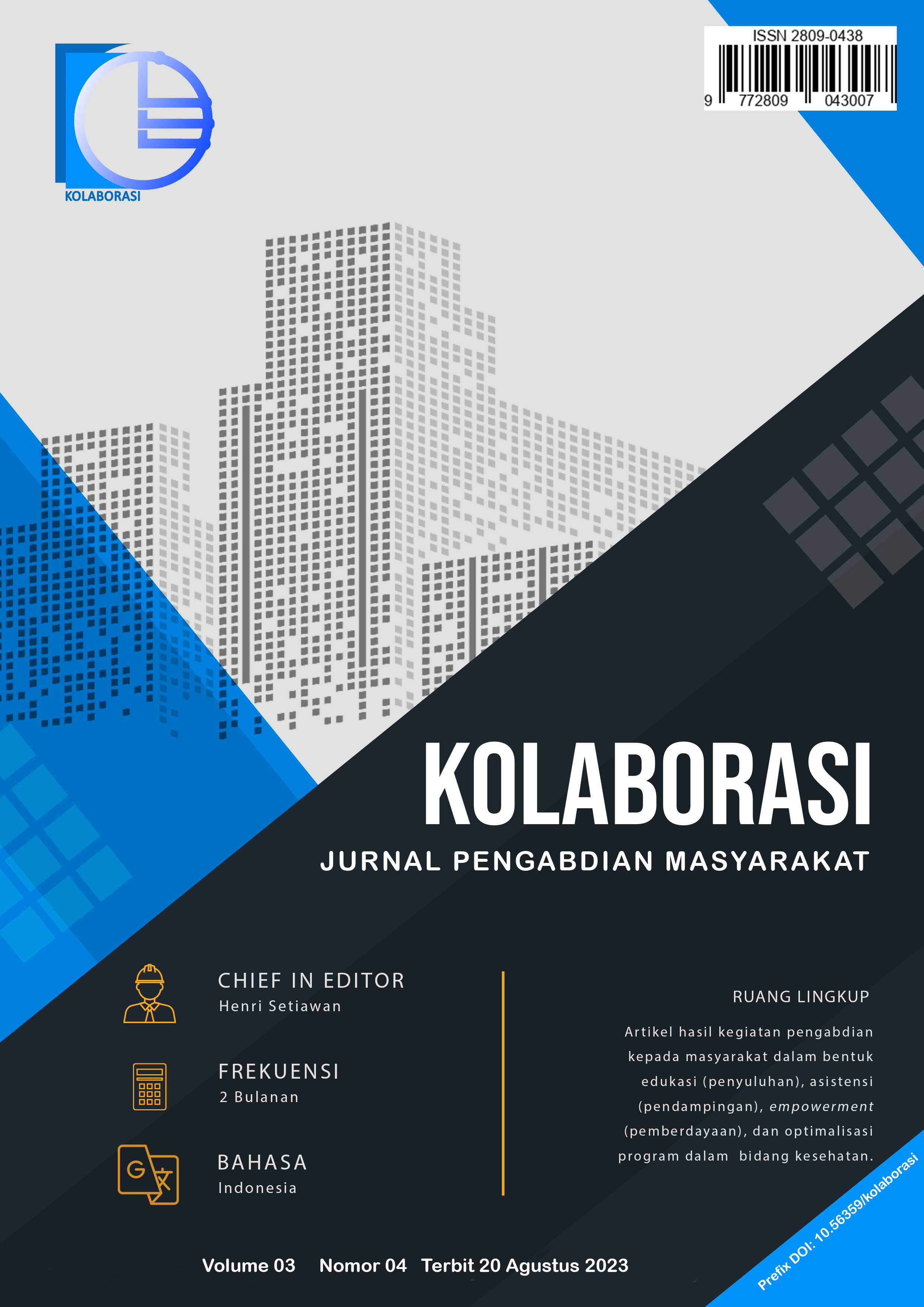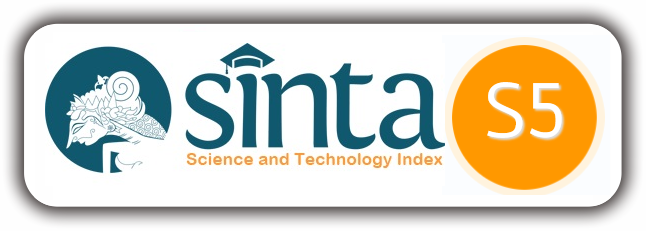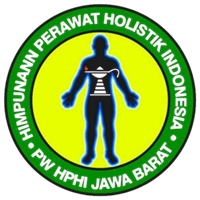Edukasi Stunting pada Ibu Balita
DOI:
https://doi.org/10.56359/kolaborasi.v3i4.302Kata Kunci:
Edukasi, Stunting, Ibu BalitaAbstrak
Introduction The prevalence of stunting in Indonesia in 2022 is 21.6%, while in Ciamis in 2021 it is 16%, this figure has not reached the national target of 14%. This is a very serious problem that needs to be dealt with quickly and precisely. One of the factors causing stunting is the lack of knowledge about efforts to prevent stunting from an early age. The impact of stunting is very dangerous for the survival of children in the future. One of the efforts to prevent stunting that can be done is to provide education about efforts to prevent stunting.
Objective: The purpose of this community service is to increase the knowledge of mothers of toddlers about stunting, with the target of mothers of toddlers who come to Posyandu Dusun Desa Kulon, Cijeungjing Ciamis.
Method: The method used in this service is the provision of education about stunting through the media of leaflets.
Results: The results of the service show that the average pretest result is less knowledgeable by 65%, and after education, the average knowledge is sufficient by 60.5%.
Conclusion: Stunting education using leaflet media can increase the knowledge of mothers under five as an effort to prevent stunting.
Unduhan
Referensi
Dinas Kesehatan Provinsi Jawa barat. (2019). Renstra Dinas Kesehatan Provinsi Jawa Barat. 2–4.
Erfiana, Sri Intan Rahayuningsih, & Nova Fajri. (2021). Hubungan Pengetahuan Ibu dengan Perilaku Pencegahan Stunting pda Balita. In JIM FKep (Issue 1). https://jim.usk.ac.id/FKep/article/view/18408/8456
Kemenkes RI. (2023, January 3). Prevalensi Stunting di Indonesia Turun ke 21,6% dari 24,4%. https://sehatnegeriku.kemkes.go.id/baca/rilis-media/20230125/3142280/prevalensi-stunting-di-indonesia-turun-ke-216-dari-244/
Kementerian Kesehatan. (2021). Petunjuk Teknis Penyusunan dan Pelaksanaan Strategi Komunikasi Perubahan Perilaku Percepatan Pencegahan Stunting (Buku 1). In Kementerian Kesehatan RI (Vol. 11, Issue 1). https://promkes.kemkes.go.id/download/fpkk/files49505Juknis Implementasi KPP Stunting_ISBN_13072021.pdf%0Astunting.go.id
Nshimyiryo, A., Hedt-Gauthier, B., Mutaganzwa, C., Kirk, C. M., Beck, K., Ndayisaba, A., Mubiligi, J., Kateera, F., & El-Khatib, Z. (2019). Risk factors for stunting among children under five years: A cross-sectional population-based study in Rwanda using the 2015 Demographic and Health Survey. BMC Public Health, 19(1), 1–10. https://doi.org/10.1186/s12889-019-6504-z
Safitri, & Fitranti. (2016). Pengaruh Edukasi Gizi dengan Ceramah dan Booklet terhadap Peningkatan Pengetahuan dan Sikap Gizi Remaja Overweight. Journal of Nutrition College, 5(Jilid 2), 374–380.
Suharto, A., Wildan, Moh., & Handayani, T. E. (2020). Development of Stunting Prevention Behavior Model Based on Health Promotion Model and Social Capital in The Magetan District. Health Notions, 4(2), 48–56. https://doi.org/10.33846/hn40204
WHO. (2018). Reducing stunting in children: equity considerations for achieving the Global Nutrition Targets 2025.
Unduhan
Diterbitkan
Cara Mengutip
Terbitan
Bagian
Lisensi
Hak Cipta (c) 2023 Heni Heryani, Istikharoh Istikharoh, Meylinda Sari, Mirna Yulansari, Monica Putri Gustin

Artikel ini berlisensi Creative Commons Attribution 4.0 International License.












